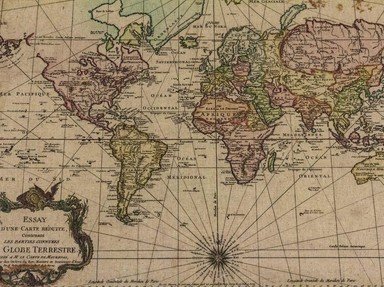Quiz Answer Key and Fun Facts
1. Although L'Anse aux Meadows was occupied by Norse explorers nearly five hundred years earlier, what Canadian provincial capital is commonly regarded as the oldest English-settled city in North America?
2. Santo Domingo, in the Dominican Republic, would become one of the oldest capitals of the Caribbean after its establishment. What city, depicted, would be the next to be established as a city (receiving that title from Spain in the late 16th century)?
3. Settled in 1519, the image here depicts the ruins of the first Pacific Coast European settlement in the Americas. It's in what modern country?
4. In 1521, what city was established by Ponce de León to, eventually, become the oldest continuously-inhabited settlement of the United States?
5. Established by Jacques Cartier, the temporary settlement of Charlesbourg-Royal was built in 1541. It later became part of what fortified French Canadian city?
6. Considered the first European-founded capital of the "New World", the city of Española was established in 1598 in what is now which of these states?
7. Established as Canada's first trading post in the 16th century, what Quebec town, still standing, is the oldest continuously used French settlement on the continent?
8. Originally a Navajo site, what U.S. state capital is the oldest in the country, having been settled in 1610 by Don Juan de Oñate for New Spain?
9. Predating the arrival of the Mayflower by six years, what New York city on the Hudson River, originally known as Fort Nassau, was settled by the Dutch in 1614?
10. This image of Battery Park was shot in what was formerly New Amsterdam, a settlement that grew to become one of the world's largest cities. It's found in what modern day borough?
Source: Author
kyleisalive
This quiz was reviewed by FunTrivia editor
agony before going online.
Any errors found in FunTrivia content are routinely corrected through our feedback system.
